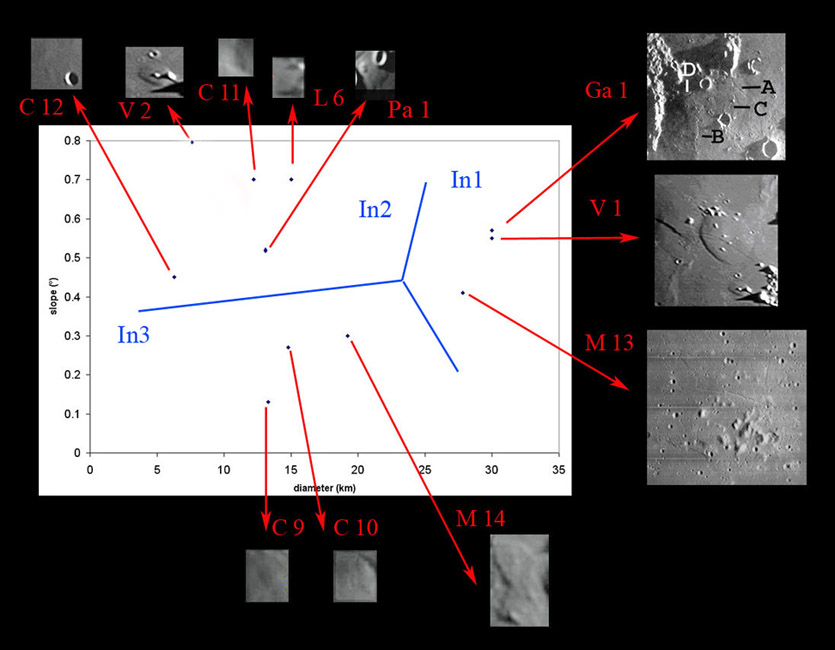December 27, 2017
Understanding Swells
Originally published June 28, 2008

image from Consolidated Lunar Dome Catalogue
Lunar domes have been closely studied since the 1950s and the typical hemispherical or flat mound with summit pit is widely accepted to be the lunar equivalent of familiar terrestrial small shield volcanoes. Many other lower rises have more gentle slopes, and lack the summit pit and sometimes the roughly round outlines of classical domes. I have called these features swells, and the Geological Lunar Research group has now studied enough of them to offer a classification scheme and interpretation of origin. The most famous swell is actually called a dome - the Valentine Dome (V1 on the figure). Other relatively familiar ones are a small one (V2) near V1 and one on the edge of Sinus Iridum (L6). Following researchers before them the GRL team interprets swells as intrusive doming. Intrusions are subsurface concentrations of magma that have locally uplifted the mare. It is peculiar that relatively large blobs of magma rise so close to the surface but do not erupt, but it happens even on Earth. It is also intriguing that many intrusive swells have well-defined edges - see the Valentine Dome - rather than even more gradual slopes. To find out more about intrusive domes see this recent short paper and the new GLR dome catalog.
Chuck Wood
Yesterday's LPOD: The Coming Death of LPOD
Tomorrow's LPOD: Bright Moon
COMMENTS?
Register, Log in, and join in the comments.



